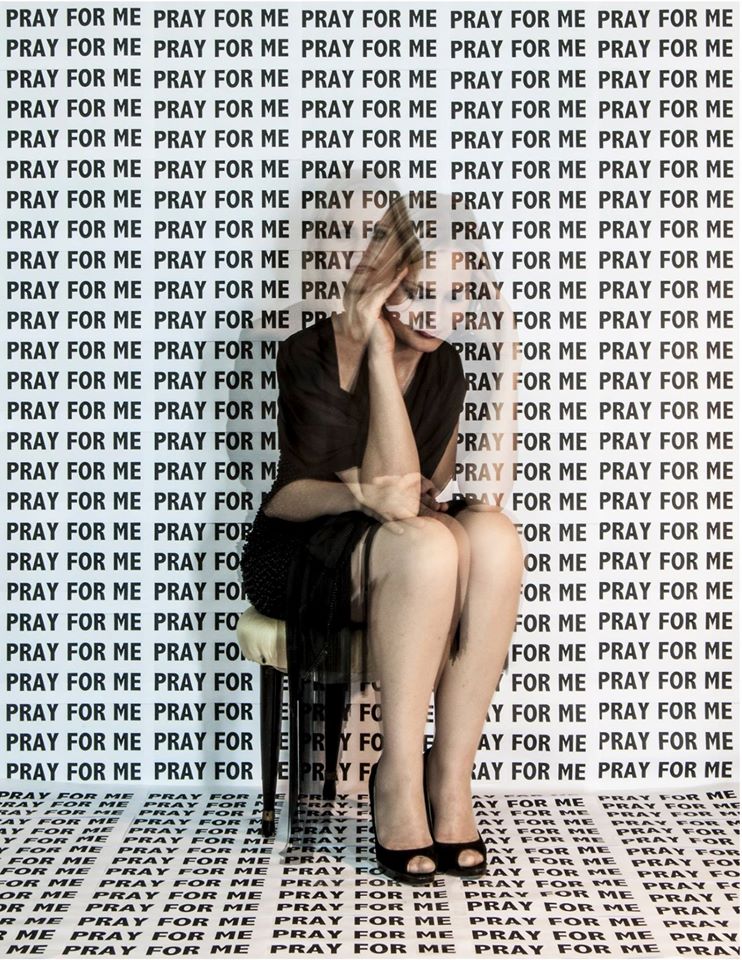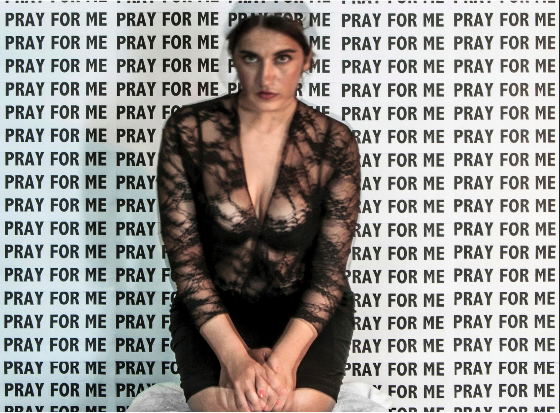Dal 31 maggio al 5 giugno il Teatro dell’Orologio espone in mostra permanente il progetto fotografico di Alessandro Fusco, uno dei giovani partecipanti di Dominio Pubblico – la città agli Under 25. In questi giorni di fermento lo abbiamo incontrato per parlare di PRAY.
PRAY è una preghiera ma anche un monito alla società contemporanea a non abbandonare la comunicazione, quella vera, quella verbale, che può restituire un’identità a noi membri di questa società liquida e in evoluzione. Cosa può fare allora, a questo fine, il desiderio di libertà, che hai trovato come costante della storia del mondo femminile, e cosa possono dunque fare le donne?
Il desiderio di libertà, innato anche nell’uomo più mite, non può che essere assecondato e fatto di venire molla di uno sviluppo, e quindi di una evoluzione. A tal proposito la figura femminile non deve porsi limiti. Non deve autocensurarsi.
Secondo te, questo mondo, preda dei cambiamenti, è una delle cause della frantumazione dell’io (che non trova appigli per la propria autodefinizione), o è la stessa mancanza di identità che ci spinge a stravolgere continuamente il nostro mondo, in cerca di qualcosa che non sappiamo bene cosa sia?
Direi che è la mancanza di costanti (anche negative come quelle avute nel corso della storia) a lasciare pochi appigli per stabilizzarsi, per definirsi. La frantumazione dell’io non può che essere una conseguenza (quasi esclusivamente occidentale). Ciò di cui abbiamo bisogno ci deve essere in qualche modo “mostrato”. Altrimenti perdersi è inevitabile.
Hai posto le donne al centro dell’attenzione: come si inserisce invece il rapporto uomo-donna nel discorso sulla definizione di sé e del recupero di una comunicazione autentica?
Ho concepito il lavoro come una parata di donne che si rivolge a un pubblico frammentato: uomini certo, ma anche altrettante donne che sono invece vittime dell’autocensura. Si tratta di una comunicazione diretta, uno “sguardo in macchina”, oltre i generi.
Tu sei un ragazzo giovane, nato in un contesto che aveva già in sé, da tempo, tutto ciò che hai voluto denunciare e mettere in luce: da dove viene allora il disagio di PRAY, la necessità di discostarti da qualcosa che ti è tremendamente familiare, dato che, probabilmente, non hai sperimentato nient’altro?
PRAY, prima ancora di diventare un progetto artistico, nasce come una riflessione sociale in un contesto in cui, paradossalmente, occorre ancora ragionare su queste questione, che un tempo avrei creduto totalmente passate (e certamente non familiari). Tutto ciò mi è parso quasi “volgare”. Per questo ho caratterizzato i lavori anche da una sottile nota kitsch, che parte dai costumi e pervade le stesse immagini.
[divider]ENGLISH VERSION[/divider]
From May 31 to June 5 at Teatro dell’Orologio will be available the exhibit of the photographic project of Alessandro Fusco, one of the young people of Dominio Pubblico – the city under 25. In these frenetic days we met him to talk about PRAY.
PRAY is a prayer but also a warning to modern society not to leave aside the real communication, the verbal one, that one which can give back an identity to all the people of this fluid and constantly evolving society. At this point, what can the desire to be free that you have found as a constant in the history of the women’ world do, and generally, what can women do?
The desire to be free, that is also present in the most moderate man, must be supported and must be translated into a development that brings to an evolution. For this purpose, the importance of a female presence cannot be limited. It cannot be self-censored.
According to you, can this world, which is constantly changing, be the cause of the fragmentation of the Ego (which cannot find excuses for its own auto definition) or is it the same lack of identity which brings us to continually distort our world, looking for something without really knowing what?
I would say that it is the lack of constants (even negative ones, like those that happened in the course of history) that is leaving less and less excuses to stabilize and define ourselves. The fragmentation of the Ego is only a consequence (an exclusively western one). What we need must be in some way “shown”. Otherwise it is very easy to get lost.
You put women at the centre of your exhibit: how can the relationship between man and woman be inserted back into the definition of oneself and the recovery of an authentic communication?
When I was thinking about it, I imagined a women’s parade addressed to a fragmented public: men, but even women are victims of the self-censor. We are talking about direct communication, a “glimpse in the car”, that goes beyond genders.
You are a young man, born in a context that already had everything that you wanted to denounce and make clear. Where did the difficulty of PRAY come from? Why do you have the need to move the focus away from something that it is so familiar to you? Since you probably haven’t tried anything different?
Before being an artistic project, PRAY was born as a social reflection in a context where, ironically, you need to think about these matters, that once I would have thought surpassed (and certainly not familiar). It all almost seemed “vulgar” to me. For this reason, I characterised my works with a keen kitsch note, that starts from the customs and overwhelms the same images.
Traduzione a cura di Clarissa Candellero


